Rear sway bar
Some people try to get away without a rear sway bar on these cars. In some ways not having the bar is better, as it’s less weight, the rear suspension is a bit more free to move, and maybe it helps the car put power down better.
At the same time, there aren’t a ton of options out there for rear leaf springs. Anything stiffer than this will either be steel and super heavy, or a custom composite which is going to be a super expensive.
One thing you *must* be able to do, is tune the car to be its best, on a variety of surfaces under a variety of conditions. The more adjustments you can make, and the wider their range of adjustment, the more likely it is you’ll be able to find a spot in the overall adjustment spectrum, that suits the situation. Nothing should ever be at its limit of adjustment – what if more would be better? Without the ability to adjust the rear alignment in this live-axle dinosaur (a critical thing in powerful RWD cars), you need to have some other options at your disposal. In comes in the rear bar.
As with the panhard, nothing off the shelf was really very good. Every bar I’ve seen for these cars hangs down below the axle like so:
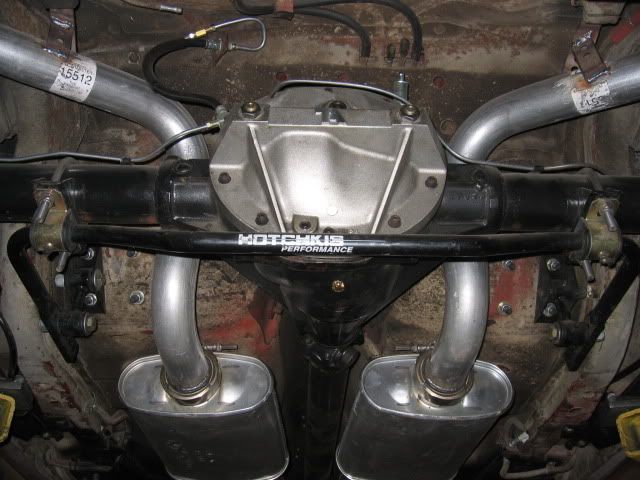
With this design, as the axle moves up and down, so does almost the entire weight of the rear sway bar…more dreaded Steelitis, in one of its worst forms, unsprung weight.
Much better to get the bulk of the bar on the chassis, with just the bar’s arms moving up and down with suspension movement. Just a design change can mean 10 pounds saved in unsprung weight. The other thing with this sort of bar, you’ve got a little bit of adjustment with arm lengths, but that’s it.
I am a tremendous believer in the Speedway (http://www.1speedway.com) style modular sway bars. With them, you can get some adjustments in the arm length, but also in the sitffness (outside diameter and wall thickness) of the center section. With a new $100 center section, you can shift your adjustment range up or down, without having to buy a whole new bar.
John found a place to mount the bar forward of the rear end, on the chassis. This required fabricating some custom mounts, welding them onto the car, and welding some mounts onto the axle. Letting the pictures talk-
And the endlinks, adjustable on the driver side.
The bar itself is a 1″ center, the arms aluminum, and the bearings bronze, so it’s not too heavy. Lots of adjustment on driver side arm, and the ability to increase or decrease the adjustment range, with different center sections.
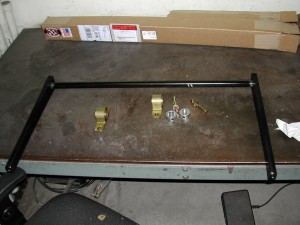
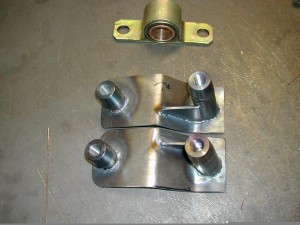
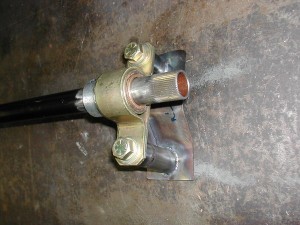
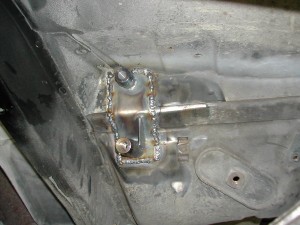
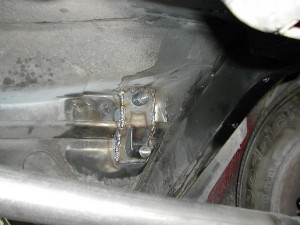
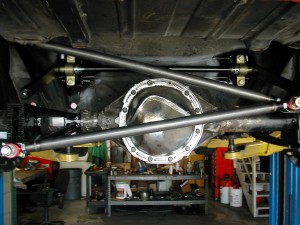
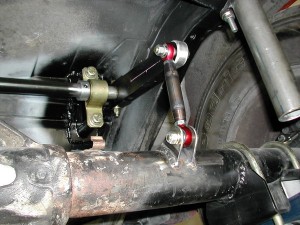
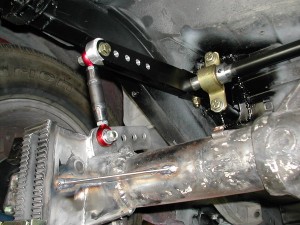
Leave a Reply
You must be logged in to post a comment.